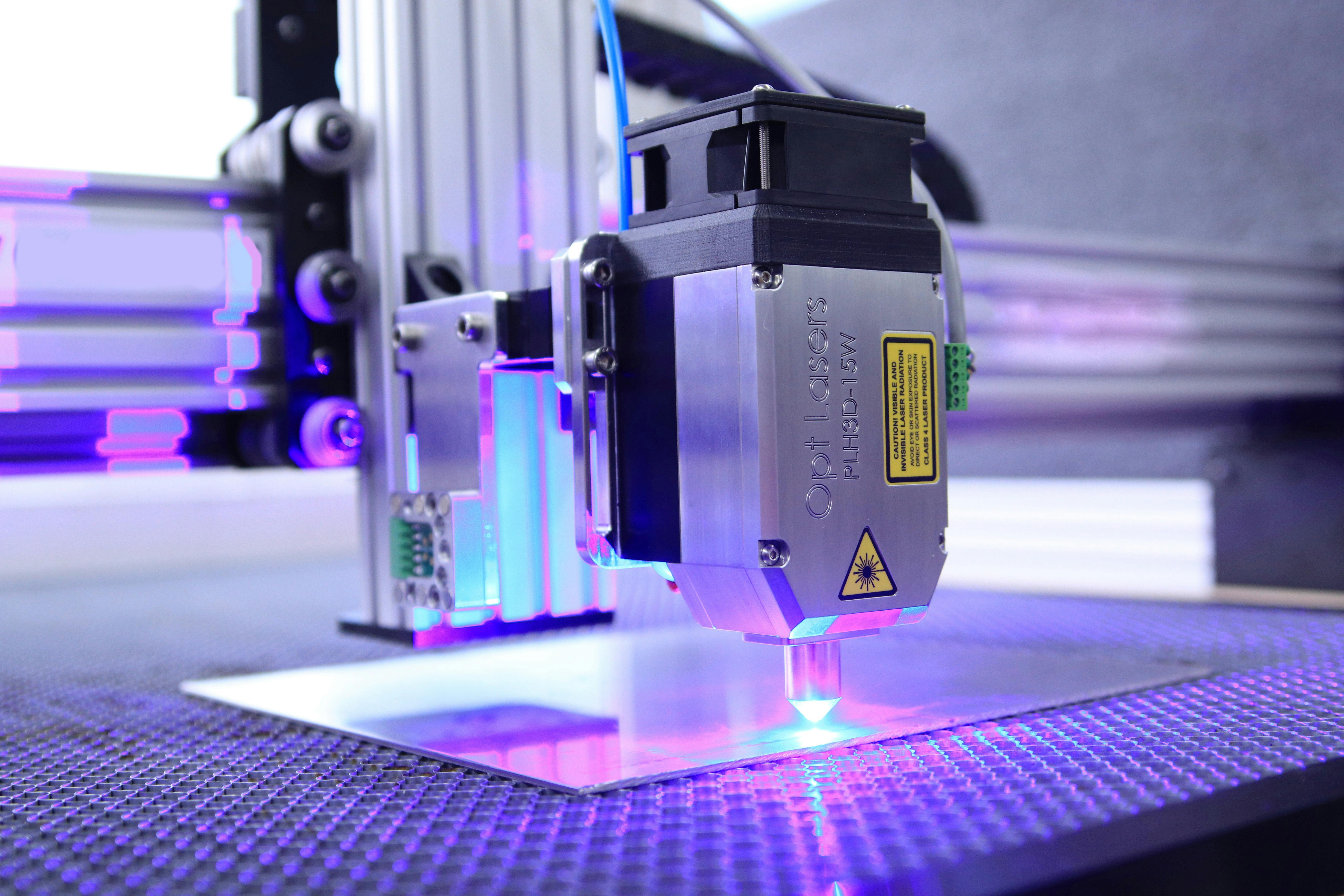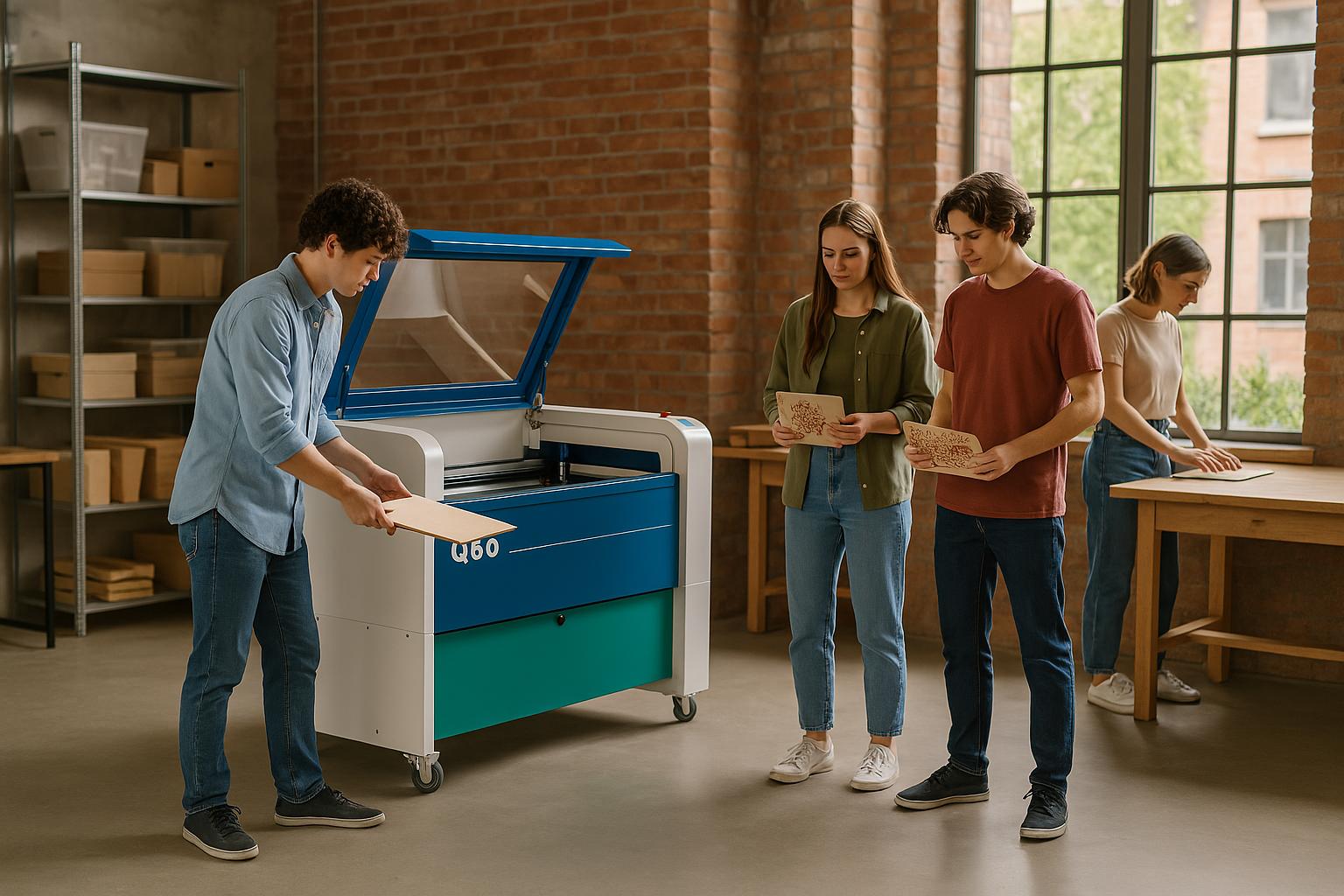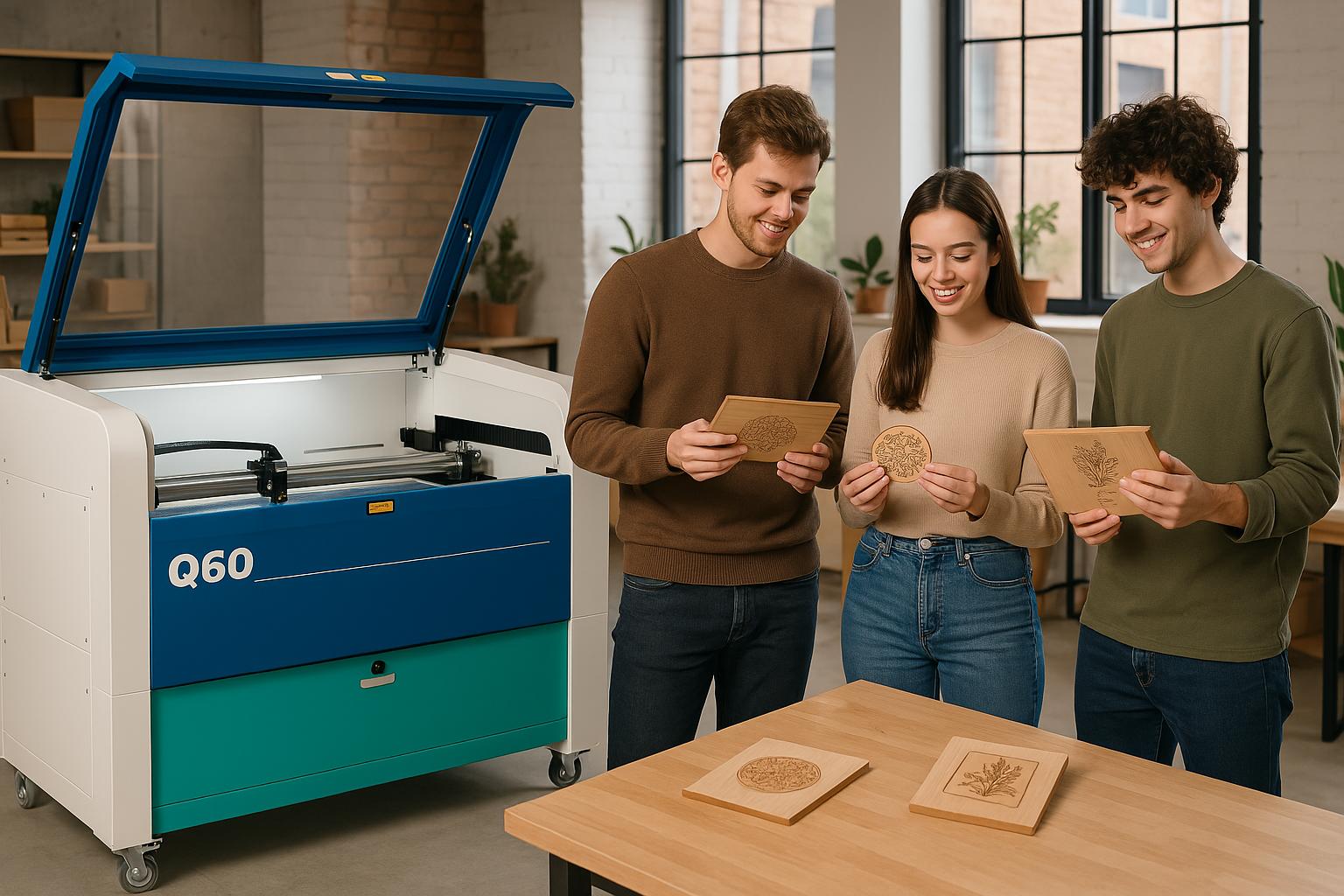Laser engraving is a fun hobby that’s become very popular. It lets anyone make beautiful designs on different materials. Finding the right laser engraver for beginners can seem hard, but with the right help, you can choose well. The best one should be easy to use, versatile, and not too expensive.
Laser engraving lets you do many creative things, like making wooden signs or custom jewelry. When picking a laser engraver, think about the projects you want to do and how complex they are. The best one for beginners will have good power, speed, and safety features.
Introduction to Laser Engraving
Laser engraving is a hobby that’s fun and rewarding for everyone. It’s perfect for crafty people and tech lovers alike. With the right laser engraver, you can make amazing projects that will wow your loved ones.
Understanding Laser Engraving Basics
Laser engraving is a cool tech that lets you make detailed designs on many materials. To start with laser engraving, you need to know the laser engraving basics. This includes the different types of laser engravers and what they can do.
Beginner applications for laser engraving include making designs on wood, plastic, and metal. You can also create your own custom signs and designs.
Learning the laser engraving basics and about the different types of laser engravers opens up a world of creativity. It lets beginners make high-quality engravings and designs.
Why Choose a Beginner-Friendly Laser Engraver
Choosing the right laser engraver is key to a great learning experience. A beginner-friendly laser engraver is easy to use. It lets new users learn the craft without getting stuck on hard-to-use machines. The main benefits include:
- Intuitive interface and controls
- Clear and detailed user manual
- Access to customer support and online resources
- Affordable price without losing quality
A beginner-friendly laser engraver makes learning less frustrating. It lets beginners start projects fast and get great results. As they get better, they can try more complex things.
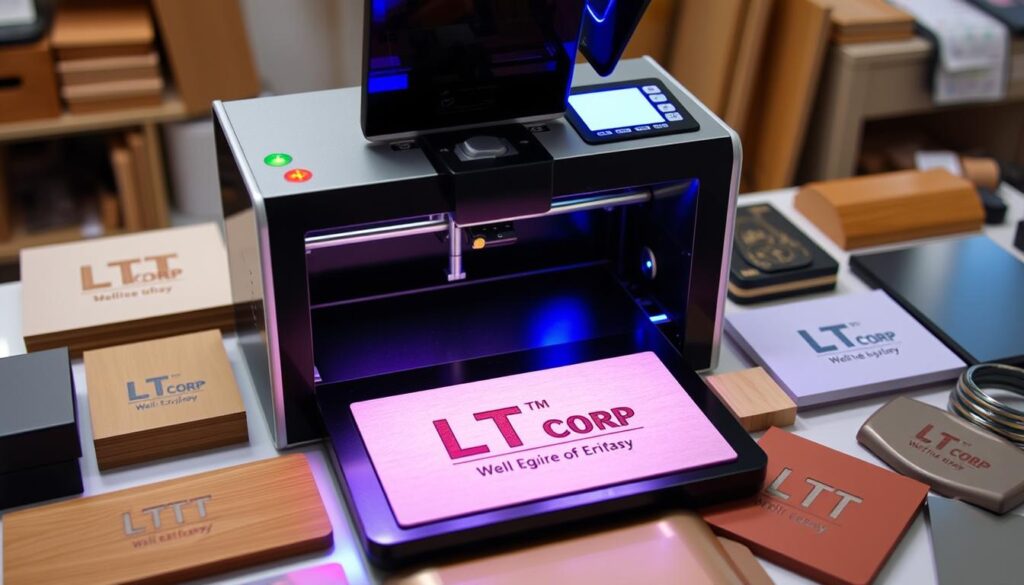
With the right tools and help, anyone can get good at laser engraving. It’s great for making special gifts, custom items, or just for fun. A beginner-friendly laser engraver is the best first step. It helps you enjoy all the benefits of laser engraving.
Essential Features to Consider When Buying
When you buy a laser engraver, it’s key to think about what you need. A laser engraver buying guide can guide you through the choices. Look at the laser engraver’s features like power, speed, size, safety, and software.
Power and Speed Settings
The power and speed of a laser engraver matter a lot. You want one that can adjust to different materials and projects. This makes your work easier and better.
Working Area Size
The size of the area where you can work is important. Think about the size of your projects. Choose a laser engraver that fits your needs.
Some key things to think about when buying a laser engraver are:
- Power range
- Speed range
- Working area size
- Safety features
- Software compatibility
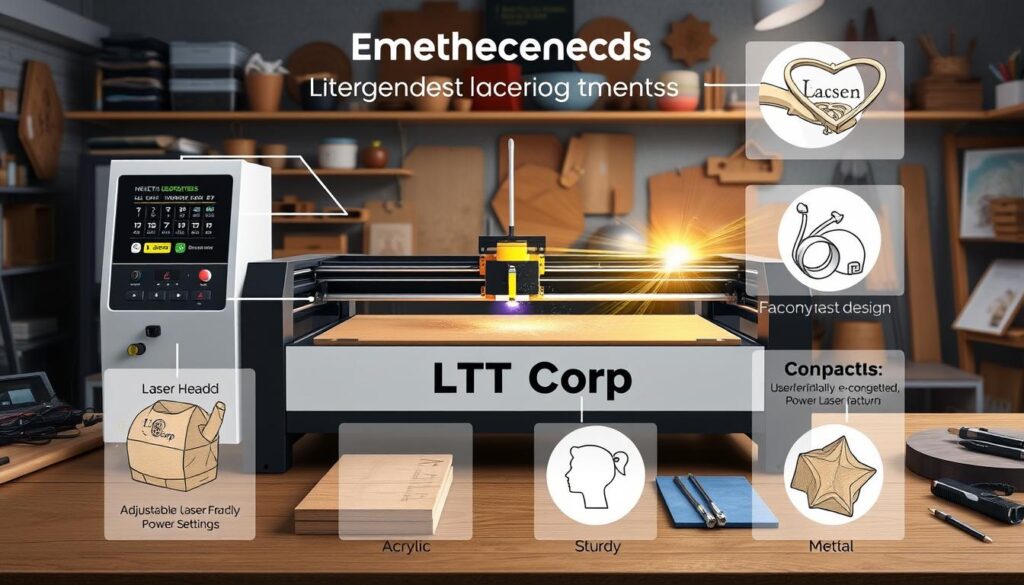
Safety Features
Safety is a big deal with laser engravers. Look for ones with safety features like emergency stops and shields.
Software Compatibility
It’s important for the software to work well with your laser engraver. Choose one with software that makes designing and editing easy.
Best Laser Engraver for Beginners: Recommendations
Choosing the right laser engraver for beginners can be tough. We’ve picked out top models for you. So you’ll find the perfect one for your needs.
For beginners, an entry-level laser engraver is a smart start. Here are popular picks:
This models have the latest features, like high-power lasers and big working areas. This is also very durable and reliable.
Compatible Materials and Their Applications
Laser engraving materials are diverse and offer a wide range of creative possibilities. When it comes to compatible materials, the options are vast. This includes wood, plastic, metal, leather, and more. Each material has its unique characteristics and applications, making laser engraving a versatile technique for various projects.
Some of the most popular laser engraving materials include:
- Wood: ideal for creating decorative items, signs, and furniture
- Plastic: suitable for making custom phone cases, jewelry, and other accessories
- Metal: often used for engraving tools, equipment, and parts
- Leather: perfect for creating personalized items, such as wallets, belts, and bags
Understanding the properties of different laser engraving materials is key for achieving the desired results. By choosing the right compatible materials for your project, you can unlock a world of creative possibilities. This way, you can produce high-quality engravings with your laser engraver.
With the right laser engraving materials and a bit of creativity, you can create unique and personalized items. These items make great gifts or add a personal touch to your home or office. Whether you’re a beginner or an experienced user, exploring the world of laser engraving materials can help you take your projects to the next level.
Setting Up Your First Laser Engraver
Setting up a laser engraver is a big step. It’s important to follow a beginner setup guide for a smooth and safe experience. You’ll need to pay attention to detail and set up a good workspace.
A beginner setup guide will teach you about a suitable workspace. It will also cover initial configuration steps and basic maintenance tips.
To begin, prepare a safe and suitable workspace for your laser engraver. Make sure there’s good ventilation, a stable work surface, and enough light. Keep the area clean and away from flammable materials. A beginner setup guide will help you set up your laser engraver easily and confidently.
Workspace Requirements
A well-organized workspace is key for safe and efficient laser engraving. Consider these factors when setting up your workspace:
- Adequate ventilation to remove fumes and particles
- A stable and flat work surface to prevent accidents
- Good lighting to illuminate the work area
- A fire extinguisher and first aid kit nearby
Initial Configuration Steps
After setting up your workspace, it’s time to configure your laser engraver. This includes:
- Assembling the machine according to the manufacturer’s instructions
- Installing the necessary software and drivers
- Calibrating the laser and adjusting the settings as needed
Basic Maintenance Tips
Regular maintenance is key to keeping your laser engraver in good shape. This includes:
Cleaning the machine and its components regularly, checking for wear and tear, and replacing parts as needed. By following these tips and setting up your laser engraver correctly, you’ll have a safe and productive experience.
| Maintenance Task | Frequency |
|---|---|
| Cleaning the machine | Daily |
| Checking for wear and tear | Weekly |
| Replacing parts | As needed |
Common Mistakes to Avoid
Using a laser engraver can be tricky. Laser engraver mistakes are common, and they can be frustrating, even for beginners. One big mistake is setting the wrong material settings. This can damage your materials or make the engraving look bad.
Another mistake is not having enough ventilation. This can be dangerous to your health. Beginner mistakes like these can be prevented by learning the basics of laser engraving and following safety rules. Here are some mistakes to watch out for:
- Incorrect material settings
- Insufficient ventilation
- Neglecting safety precautions
To avoid these mistakes, be careful and follow the right steps. Always read the manufacturer’s instructions and take safety precautions seriously. This will help you have a safer and more fun time with your laser engraver.
Safety Guidelines and Best Practices
When using a laser engraver, safety is key. Safety rules are in place to protect you from harm. It’s important to follow these rules to work safely.
Having the right safety gear is a must. This includes safety glasses, gloves, and a mask. Also, good ventilation is needed to clear out harmful particles and gases. By following these steps, you can stay safe while working with a laser engraver.
Personal Protection Equipment
- Safety glasses to protect eyes from laser beams
- Gloves to prevent skin irritation and burns
- Mask to prevent inhalation of harmful fumes
Emergency Procedures
It’s vital to have a plan for emergencies. Know how to handle fires and have a first aid kit ready. Being prepared and following safety rules helps keep you safe while using a laser engraver.
Conclusion
Laser engravers open up a world of creativity for beginners. They are great for making personalized gifts, unique home decor, or starting a business. The right laser engraver can help you express yourself in new ways.
When choosing a laser engraver, think about your budget, skill level, and what you want to make. Look at the power, speed, safety features, and software it comes with. This will help you pick the best one for your artistic journey.
Laser engraving can also be a way to make money. With the right tools and practice, you can make unique products. These products can attract customers and help you succeed in a competitive market.
So, why not start exploring laser engraving? It’s a chance to unleash your creativity and make something special. Begin your journey today and see where it takes you.
FAQ
What is the difference between a laser engraver and a 3D printer?
A laser engraver uses a laser beam to remove material, making engravings. A 3D printer, on the other hand, builds objects layer by layer from materials like plastic.
How much space do I need for a laser engraver?
The space needed for a laser engraver varies. It depends on the machine’s size and your projects. Most beginner models fit on a standard workbench. But, you’ll also need space for ventilation and safety.
What materials can I use with a laser engraver?
Laser engravers can work with many materials. This includes wood, acrylic, plastic, leather, and some metals. The materials you can use depend on your laser’s power and capabilities.
How do I design my own projects for laser engraving?
Most laser engravers come with software or work with programs like Adobe Illustrator. You can make your designs or use pre-made ones. The key is to have high-contrast images or text for engraving.
How do I maintain my laser engraver?
Keeping your laser engraver in good shape is important. Clean the lens, align the laser, and check for damage regularly. Follow the manufacturer’s instructions for maintenance.
What safety precautions should I take when using a laser engraver?
When using a laser engraver, safety is key. Wear safety glasses and ensure good ventilation. Always follow the manufacturer’s safety guidelines and know the risks of laser technology.
Can I engrave on curved or irregular surfaces with a laser engraver?
Most beginner laser engravers are for flat surfaces. Engraving on curved surfaces needs special equipment or techniques. Advanced models might offer this feature, but not entry-level ones.
How do I choose the right laser engraver for my needs?
Choosing a laser engraver involves several factors. Consider power, size, ease of use, safety, and software. Think about your budget and the projects you want to do. Reading reviews and comparing models can help you choose the right one for you.
